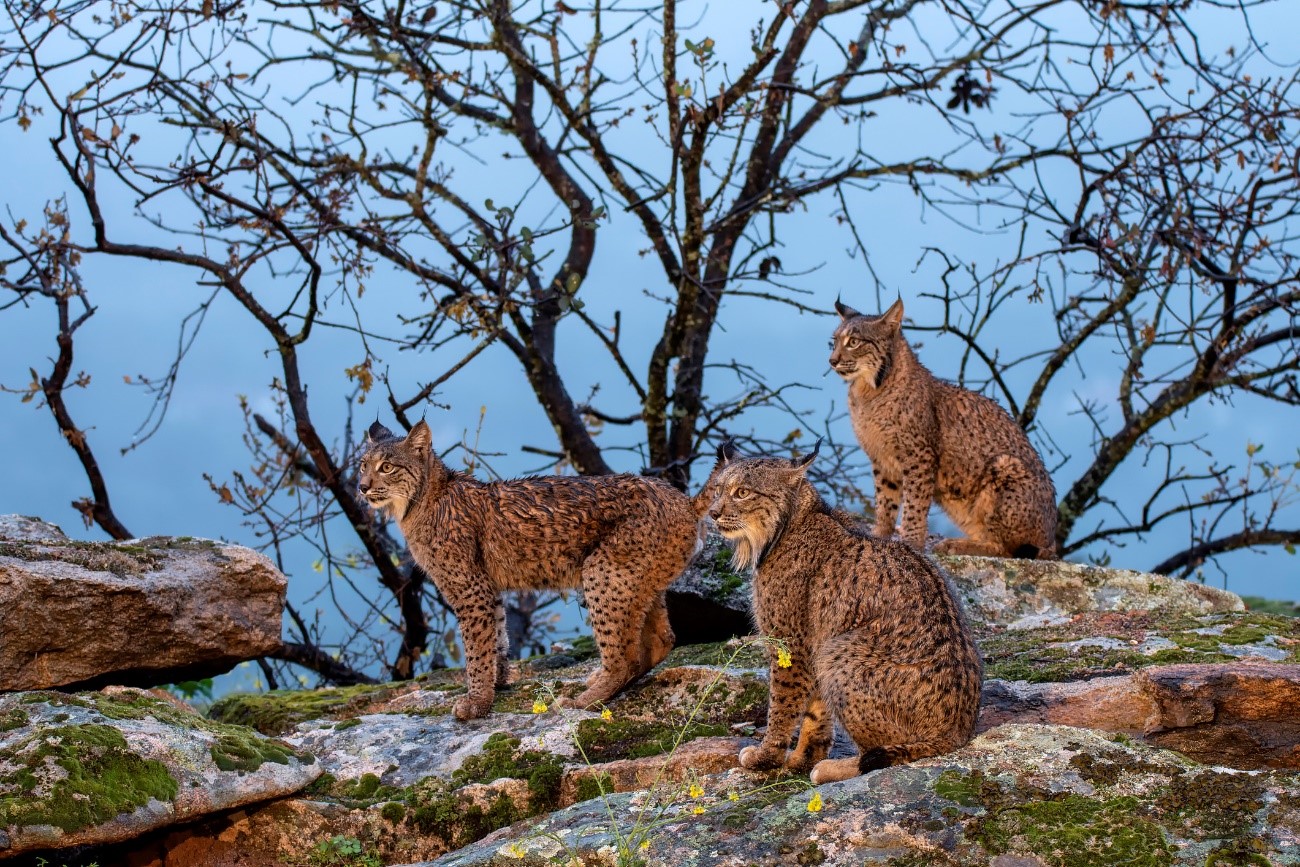Personal investigador del CSIC propone usar la inteligencia artificial para mejorar la detección de animales en zonas aisladas
Además de reducir el trabajo manual de revisión de imágenes, el nuevo sistema permitiría la localización en tiempo real

Tres linces ibéricos en su hábitat natural. / STOCKPHOTOASTUR
Personal investigador del Instituto de Microelectrónica de Sevilla (IMSE-CNM), centro mixto del CSIC y la Universidad de Sevilla, y de la Estación Biológica de Doñana (EBD-CSIC), propone en una nueva investigación emplear inteligencia artificial en la mejora de las cámaras trampa que facilitan la detección de animales en zonas aisladas. El artículo, que ha sido publicado en la revista Ecological Informatics, tiene como objetivo acercar esta tecnología a los lugares donde apenas existen infraestructuras de comunicaciones, y donde la detección de la fauna no es tarea fácil porque los programas no están optimizados.
La investigación, que data sus inicios en 2022 en el marco del proyecto LiFE y que se lleva a cabo dentro del proyecto ULTIMATE, forma parte del Plan de Recuperación, Transformación y Resiliencia de la convocatoria de 2021 sobre Proyectos de Transición Ecológica y Transición Digital. Este estudio, cuya finalidad última es la conservación de la biodiversidad, cumple con el objetivo número 15 de la Agenda de Desarrollo Sostenible (ODS).
“Nuestra experiencia en el diseño de hardware microelectrónico nos ha permitido enfrentarnos al reto de capturar estas imágenes en escenarios complejos y procesarlas en la propia cámara inteligente. Es muy destacable el trabajo de Velasco Montero, que ha permitido adaptar los algoritmos a unas condiciones de operación muy exigentes. Basta considerar, por ejemplo, los cambios en la iluminación a lo largo del día, o debidos a la meteorología”, afirma uno de los investigadores principales del proyecto en el IMSE-CNM, Ricardo Carmona.
Además de reducir considerablemente el trabajo manual de revisar las imágenes tomadas, este sistema permite detectar en tiempo real la presencia de animales facilitando actuaciones de respuesta rápida. Otra de las ventajas de integrar inteligencia artificial en la propia cámara es la disminución de la información almacenada y de los datos a transferir y analizar, pues filtra la información desechando aquella que no sea de interés. Todo esto permite al biólogo centrarse directamente en el análisis de los datos, como patrones de comportamiento, seguimiento de poblaciones, etc.
Adaptable a nivel nacional
Este método innovador se ha integrado en un prototipo hardware desarrollado en el IMSE y se ha puesto en práctica en el parque nacional de Aracena. En cuanto a su aplicación, aunque en un inicio haya sido en un entorno local, cuenta con potencial suficiente para adaptarse a nivel nacional gracias a la generalidad del entorno de trabajo que permite esta cámara inteligente.
Por su parte, el grupo de investigación de carnívoros de la EBD-CSIC estudia las tendencias de población de varias especies en sus hábitats naturales. Para ello, utilizan cámaras trampa colocadas de forma estratégica, que terminan arrojando un gran volumen de imágenes y secuencias de vídeos, muchas veces inabarcable para ser analizadas y categorizadas de forma manual.
En concreto, para este estudio se han empleado imágenes recopiladas por Ariadna Sanglas y Paco Palomares en el Parque Natural de Sierra de Aracena, en el marco de un proyecto para evaluar la población de gatos ferales. El trabajo de revisión manual de las imágenes implica una gran cantidad de tiempo. Primero hay que desechar las imágenes en las que no aparece ningún animal y, a continuación, identificar correctamente a la especie o especies que aparecen en las fotografías restantes.
La colaboración entre las dos entidades se ha visto favorecida gracias a la cercanía de sus instalaciones, pues ambas tienen su sede dentro del campus de la Cartuja. A esta condición se le suma la confluencia de organismos y su financiación, entre las que se encuentran el programa LiFE, el ministerio de Transformación Digital, la Cátedra USECHIP y el Plan Complementario en el área de la biodiversidad (PCBIO).
Reference
Delia Velasco-Montero, Jorge Fernández-Berni, Ricardo Carmona Galán, Ariadna Sanglas, Francisco Palomares. Reliable and efficient integration of AI into camera traps for smart wildlife monitoring based on continual learning. Ecological Informatics. DOI: https://doi.org/10.1016/j.ecoinf.2024.102815